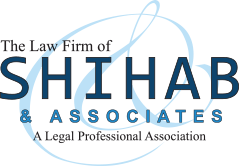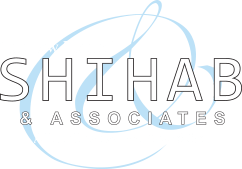There is no doubt USCIS is tightening its reviews of H-1B petitions. This blog is the fourth of a series about Requests for Evidence.
In this blog we will explore what USCIS looks for when it inquires about that nature of the relationship between the beneficiary and the petitioner. The nature of the relationship between the employer and the employee is one of the most straight forward inquiries in H-1B petitions, unless the employer/petitioner provides consulting services, outsourcing services or acts as an agent rather than an employer.
In a traditional employment relationship, the employee reports to the employer’s work location where he or she performs the professional services of the company. For example, a civil engineer reports to an engineering firm where he performs employment tasks of reviewing plans and preparing design documents for the employer. The supervisor is generally in the same office engaging the employee daily. This type of traditional relationship does not pose a challenge since it fits neatly within the conventional sense of an employer- employee relationship.
However, many employer-employee relationships may not follow this neat, traditional model. One such example is the Information Technology consultant, where employees exercise greater independence and autonomy due to the nature of the work. Such professionals travel extensively to various locations. And in many instances, may be performing services for the employer’s client, or the employer’s client’s client. For such professionals, there exists an unavoidable tension between the H-1B regulations and USCIS’ interpretations, as opposed to, the nature of the IT business model. Within this tension, there is fertile ground for USCIS to issue Requests for Evidence and/or denials unless the employer has a clear understanding of the burden of proof they are held to.
In such instances, many RFE’s question the nature of the relationship, suggesting that the relationship is one of an independent contractor or an agent, rather than an employment. H-1B regulations require in such instances, among other things, that the petitioner provide an itinerary for the employee for the period of time that the temporary employment is requested. This standard is almost impossible to meet. Most businesses will not be able to provide an itinerary for three years, the typical duration of an H-1B petition.
Also, as a consequence, when the employee is not reporting to the employer’s offices regularly, USCIS inquires whether or not the employee/beneficiary is engaged in a specialty occupation. To this effect, USCIS will request evidence in the form of contracts or end client letters to validate the nature of the assignment, while discounting evidence submitted directly from the employer-petitioner as unreliable.
As in many instances the employment relationship is not established pending the approval of the H-1B petition, the employer must rely on its employment practices in general to alleviate USCIS’s concerns. The type of documentation evidencing employment relationship should include evidence of control. Employers should establish regular written performance evaluation processes, project review and progress evaluation systems and other formalized processes evidencing control. The employer should adopt and disseminate an employee manual, and should be vigilant in following its own guidelines. Also, documentation of hiring and firing practices are critical. Case law supports the view that such evidence is considered the strongest evidence to prove employment relationship. All such documentation may be presented to support the nature of the relationship in an RFE situation.
If the H-1B beneficiary will be working at a client’s site, or a client’s client site, presenting contracts or end client letters to USCIS is unavoidable. If the beneficiary will be working in an in- house project in a consulting type company, such evidence must be presented with detail. Both USCIS and US embassies in India have raised concerns that often documentation of in-house projects are of questionable accuracy and legitimacy and are normally viewed with skepticism unless fully documented.
In conclusion, some Requested Evidence will require that the employer/petitioner and their immigration attorney work closely together, long before such an RFE is issued, to assure that the employer’s practices and the type of evidence needed are available since they are not of the type that may be accumulated on a short notice.

